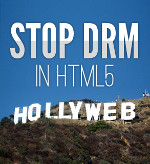Aerospace commander of Islamic Revolution Guard Corps (IRGC) Amir Ali Hajizadeh, said Tuesday that Iran's missiles have the range of 2,000 km and can reach U.S. bases in the region and also Israel.
Iran does not need to increase the range of its missiles since Israel is just 1,200 km away from Iran and the U.S. bases are even nearer, some 120 to 700 km away from Iran, said the commander.
With the existing missiles, Iran can hit the targets from the Iranian central cities of Semnan and Damghan, Hajizadeh said.
He dismissed the threats by the Europeans and said that Iran has designed and developed its missiles for U.S. and Israel targets.
There's a lot of smoke here but not too much fire. The existence of the silos has long been suspected, as the NYT mentions. While the existence of the silos opens the possibility that they may be used to house nuclear-tipped missiles, there is still no further, concrete evidence that Iran is developing nuclear weapons. The silos are an effective defense even if they "only" house "conventional" weapons.
Strategically speaking, even in the unlikely event that Iran announced a nuclear arsenal tomorrow, with the "long-range" delivery implied by the silos, their use of a nuclear device is necessarily, strictly, as they have declared in the silos' announcement, defensive. 'Attribution,' the forensic science of nuclear weapons would conclusively identify the source of the plutonium and/or uranium used to make the weapon. Not to mention the fact that when a missile is launched anywhere in the world, US and EU satellites know about it immediately. And the full trajectory is determined within seconds, from launch point to target. The US (and ROTW*, for that matter) response would be immediate and devastating.
The important question that needs to be asked of the US government is why it continues a policy policy of promoting proliferation. We only need look to N. Korea to see its consequences.
*ROTW=Rest of the World


